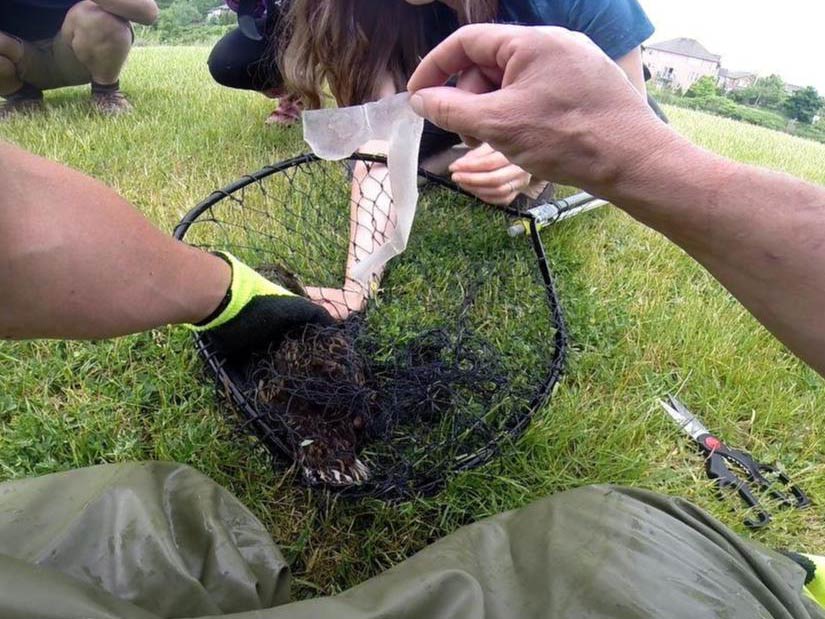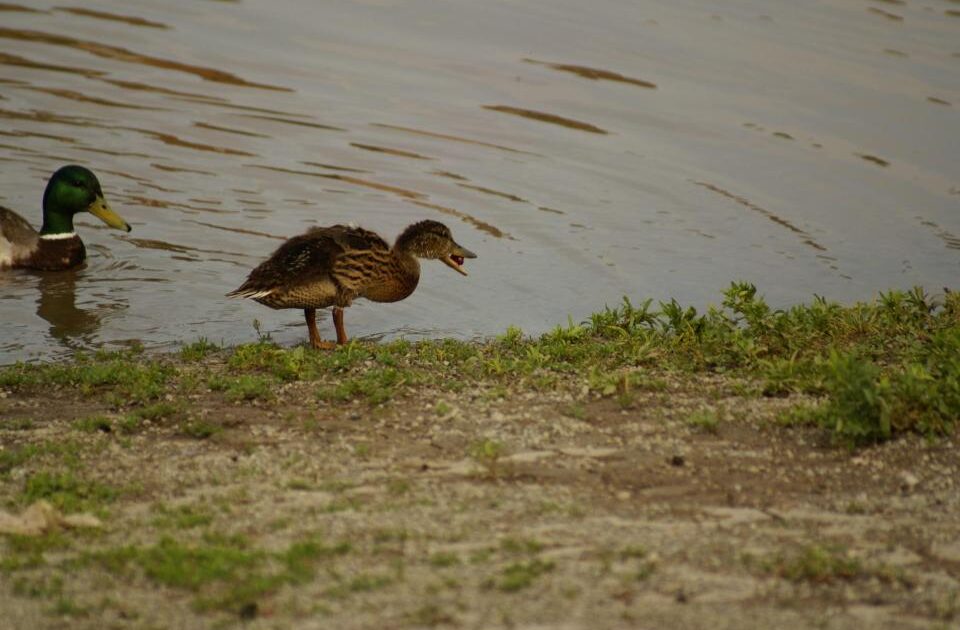We have become a throwaway society. Consuming what we can and throwing away what we no longer need or can’t use. Plastic has become the curse of our time; it is destroying the environment and our wildlife needs our protection. Everywhere you turn, you see bits of plastic lying around, blowing away and making a mess. But plastic is not just unsightly litter, it is also dangerous.
In April 2018, a raccoon nicknamed JarHead was saved from a horrible death when a Scarborough woman spotted her with her head stuck in a large jar. The woman reported the sighting to the Toronto Wildlife Centre who bought the raccoon back to their facility, removed the jar and treated the wounds on her snout and hind leg. It took five days to nurse the raccoon back to health before she could be released into the wild again. Ryan Rainville, Skedaddles Regional Supervisor provides this additional tip, “Rinse food containers to before putting them into the recycling bin to prevent skunks and raccoons from getting their heads stuck looking for food”.
In Burlington in 2014, Skedaddle had to help rescue a duckling that had become entangled in discarded six-pack rings. The team spent hours trying to catch the duckling. She was finally caught in a net by Skedaddle Technician, Corey Lewis, and the plastic was removed before the duckling was released and returned to her family. Fortunately, she was none the worse for her experience, but the outcome could have been far different if the duckling hadn’t been spotted. Bill Dowd explained that “the plastic would have got tighter and tighter around the duckling as she grew and eventually, she would not have been able to feed or fly.”
While both these stories had happy endings, the sad reality is that incidents like this are not isolated. In fact, these occurrences happen far too often. Around the country, wildlife rehabilitation centres are seeing more and more cases of animals that are being trapped, tormented, strangled and injured by plastic waste and other litter that we casually and carelessly discard when we have no further use for it. You just need to spend a bit of time browsing the internet and you will find hundreds of similar stories about animals trapped or injured by our garbage.

The Harmful Effects of Plastic on the Environment and Wildlife
Plastic waste rapidly builds up in our landfills. However, it also gets washed or blown out to sea where it becomes extremely dangerous for marine life that may ingest it. Plastic can’t be broken down by an animal’s digestive system and will block their stomachs and intestines and ultimately prove fatal. Plastic can also get tangled around an animal’s body or head and cause severe injuries. To help prevent this from happening Ryan recommends to “Cut and/or crush plastic containers, and cut each ring of plastic six-pack carriers to prevent fish and bird from becoming tangled”.
Jars and bottles that have been carelessly thrown away do not biodegrade and every single one adds to the piles of waste that pose a serious threat to our wildlife. Crabs, birds, rodents and other small animals can crawl into bottles and get stuck while larger animals, like raccoons, skunks, and dogs, can get their heads stuck.
Litter also pollutes our water supplies and creates a toxic environment where it is hard for anything to survive, destroying vital dam and river ecosystems. Fish and animals that rely on the contaminated water for survival are poisoned by the toxins. The toxic water also seeps into the soil and kills plants and vegetation along the riverbanks. The loss of that vegetation, in turn, leads to soil erosion and the loss of essential wildlife habitats as well as the deterioration of viable farming land.
Plastic Deposit Programs Reduce Litter and Protect our Wildlife
So much plastic ends up in our oceans that what we throw away has an impact on the entire planet. Environmental Defence Canada is petitioning the Ontario government to implement a deposit program for plastic bottles in a bid to reduce the amount of litter not just in our country, but around the world. Plastic poses a considerable risk to the environment because it is not biodegradable and instead of rotting it breaks apart and can cause injury or be eaten by wildlife.
Fortunately, Canadians are taking the problem seriously. In 2016 the Waste Free Ontario Act was passed and now the Ontario Government recently released a discussion paper and invited the public and interested organizations to comment on the paper and submit their ideas on how to reduce litter and waste in communities around the province. This means that the province could finally be ready to consider a deposit program for plastic.

The Long-term Impact
The deposit program for plastic will not eliminate litter and pollution from our environment but it is a step in the right direction. Payment for plastic bottles means that what was once perceived as nothing more than garbage can now have a monetary value and financial benefit for people who want to return their bottles or for those who choose to pick up litter. That could potentially remove millions of plastic bottles from our environment. And perhaps it will help encourage people to take other steps like avoiding plastic bags, buying in bulk and choosing reusable containers over disposable ones.
The Shocking and Ugly Facts About Litter
- It is estimated that the average person in Ontario produces one ton of waste each year.
- Ontarians throw away approximately three billion bottles per year and only about 50% of those are recycled.
- Ontario and Manitoba are the only two provinces without deposit programs for plastic bottles.
- Approximately 1.9 billion tons of litter end up in our oceans every year.
- A Styrofoam container can take up to a million years to decompose.
- A disposable diaper can take more than 500 years to break down.
- Cigarette butts hang around for over 10 years.
- The WWF estimates that approximately 1.5 million tons of plastic waste is generated by the water bottling industry per year.
Skedaddle Humane Wildlife Control is committed to the protection of all our wildlife and if you see any animal in distress, entangled in plastic or with their head stuck in a jar, contact us immediately.



